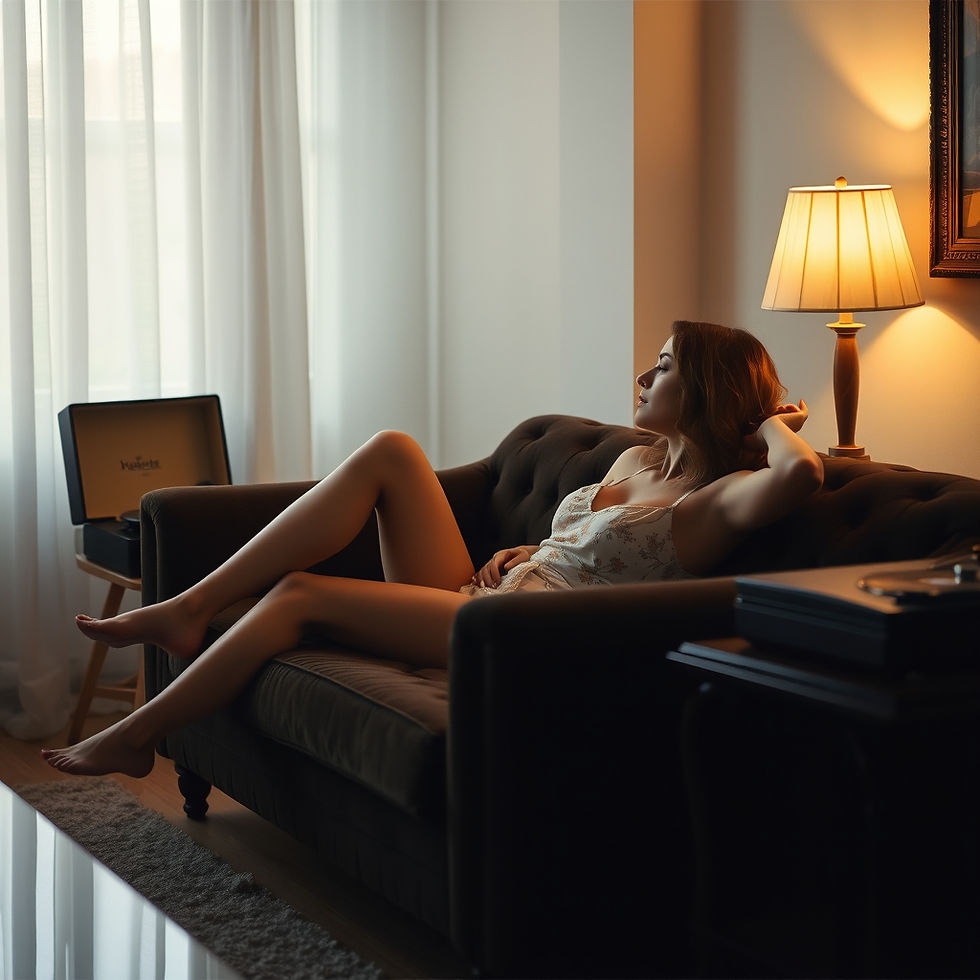If My Life Were a Dior Ad (And Sometimes, It Is)
- Renee Goodenough
- Oct 26
- 4 min read

They say, “If you adore her, Dior her.” Which sounds like an act of devotion — until you realize it’s also the most effective piece of psychological marketing since diamonds were declared “forever.”
Because Dior doesn’t just sell perfume or handbags. Dior sells the fantasy of being adored.
And honestly? I’ve bought in.
Sometimes, I’ll catch myself mid–Trader Joe’s run, headphones in, wearing sunglasses I can’t afford, and think, this is my Miss Dior era. It’s delusional. It’s divine. It’s Dior-coded.
The Dior Lifestyle Aesthetic: Delusion, But Make It French
Let’s be honest: the Dior lifestyle aesthetic is less about luxury and more about commitment to the bit.
You don’t need couture to participate — you just need a decent filter and the unshakeable conviction that life is cinematic.
It’s standing dramatically at your window while holding a coffee mug like it’s fine china. It’s narrating your own heartbreak in third person because first person feels gauche. It’s knowing full well you’re spiraling, but doing it in black-and-white with Edith Piaf playing in the background.
Dior women, at least in commercials, never sweat or spill or ugly cry. They run barefoot through gilded rooms. They dive into the ocean fully dressed. They laugh like heartbreak is something that happens to other people.
Meanwhile, I once tripped over my yoga mat and spilled matcha on my linen robe — but I did it gracefully. Dior would’ve approved.
A Brief Cultural History of the Dior Fantasy

To understand why we all want to Dior ourselves, you have to understand the brand’s mythology.
Christian Dior didn’t just design clothes; he resurrected femininity after a war that tried to starve it. When his first collection debuted in 1947, women gasped — literally gasped — at the nipped waists, the silk, the audacity of softness. The press called it The New Look.
Decades later, that same DNA fuels the modern Dior fantasy: delicate, powerful, and a little unhinged. Because luxury has always been performance — and Dior has mastered the theater of it.
In the 2010s, Dior women were manic pixies with Chanel eyeliner. By 2020, they’d evolved into soft-lit saints of quiet luxury. And now, in 2025, they’re something else entirely: post-ironic icons who are in on the joke.
We buy Dior lipstick not because it lasts longer, but because it lets us play dress-up in the adult sandbox of identity.
We Are All Dior’s Protagonists
Every generation has its main-character costume. Ours just happens to come in houndstooth and existential dread.
Dior doesn’t promise transformation — it promises narrative. It tells us that even when life is messy, we can edit it into something beautiful. That the right perfume can turn an apartment meltdown into a cinematic breakdown.
And the thing is… it kind of works. Marketing might be manipulation, but at least Dior’s version smells like bergamot and validation.
There’s a reason the Dior lifestyle aesthetic trends every few months on TikTok: it’s aspirational delusion packaged as empowerment. A performance of control in a world that constantly feels unglamorous.
When life unravels, Dior hands you a ribbon and says, “make it fashion.”
If Dior Directed My Life

Act I: The alarm rings. I rise like an heiress who’s never known burnout. The robe is satin (Amazon, but we don’t say that). I stretch like I’m posing for a Vogue wellness spread.
Act II: Coffee, poured with ceremony. A single croissant, half-eaten for aesthetic reasons. The lighting? Golden. The vibe? Unbothered.
Act III: Existential crisis. But chic. A tear rolls down my cheek like it’s auditioning for a fragrance campaign.
Act IV: Redemption arc. A deep breath. A spritz of J’adore. Cue the swelling music.
That’s the thing about being Dior-coded — it’s not about perfection; it’s about presentation.
You can be having a breakdown, but if the lighting’s right and the perfume’s expensive, it still counts as character development.
Dior as Religion (and Retail Therapy)
We treat brands like belief systems now — Dior just happens to have better lighting.
We don’t pray for peace; we light candles that smell like it.We don’t seek salvation; we seek Sephora points.We don’t confess sins; we disclose skincare routines.
But Dior’s gospel hits differently. It’s luxury that knows it’s ridiculous, that winks at you from behind the bottle. It’s camp masquerading as class. And it’s irresistible because it tells you that you — yes, you, the girl eating leftover pasta in bed — are the protagonist of something divine.
And honestly? Why not believe that? If capitalism insists on making us consumers, we might as well make consumption look like art.
The Dior Lifestyle Aesthetic: Glamour as Coping
I don’t buy Dior because I think it’ll make me better. I buy Dior because it lets me pretend I already am.
Sometimes self-care isn’t journaling or therapy — it’s reapplying lipstick mid-breakdown and whispering “c’est la vie” like a woman in a perfume ad.
It’s theatrical delusion, but it’s also survival.
Because if I can’t control the chaos, I can at least curate it. And maybe that’s the modern version of glamour — making the absurd look exquisite.
Final Thoughts (and Fragrance Notes)
If my life were a Dior ad, it would end ambiguously. The camera pans. I look back over my shoulder, a little smug, a little sad, and disappear into a field of peonies.
There’s no moral. Just an aftertaste of elegance and irony.
Because in a world obsessed with authenticity, Dior reminds us that artifice can be its own kind of truth. And maybe, just maybe, that’s enough.
So if you adore her? Dior her. But make sure she’s in on the joke.



Comments